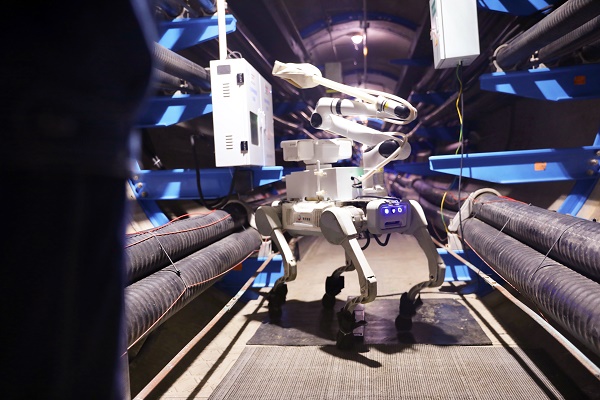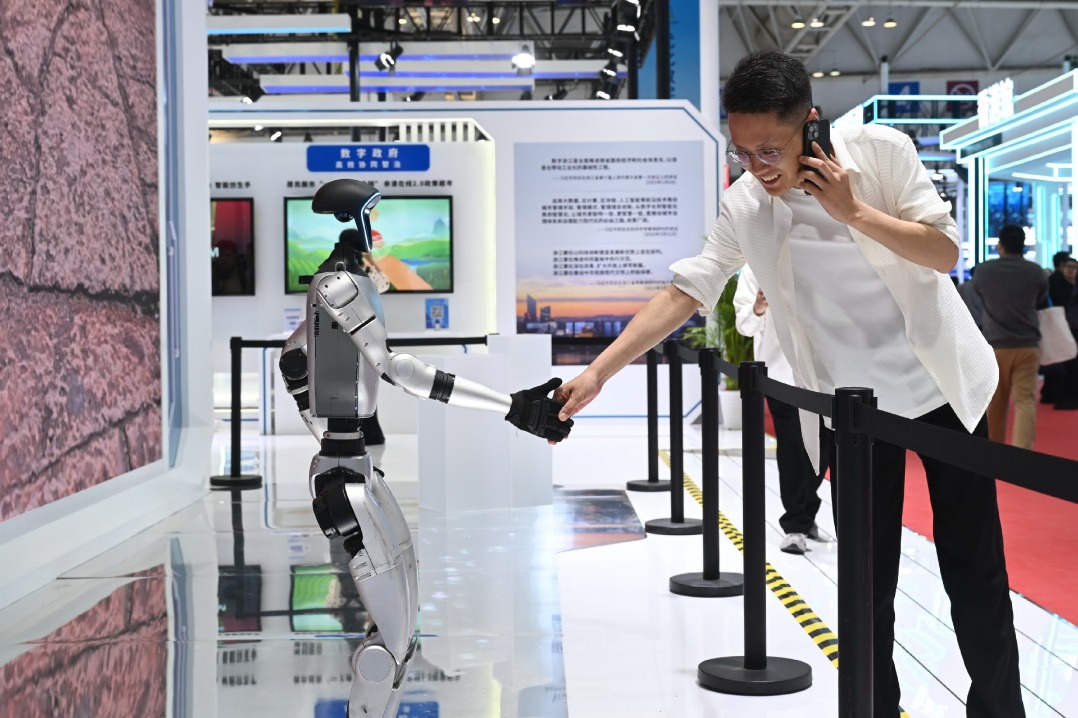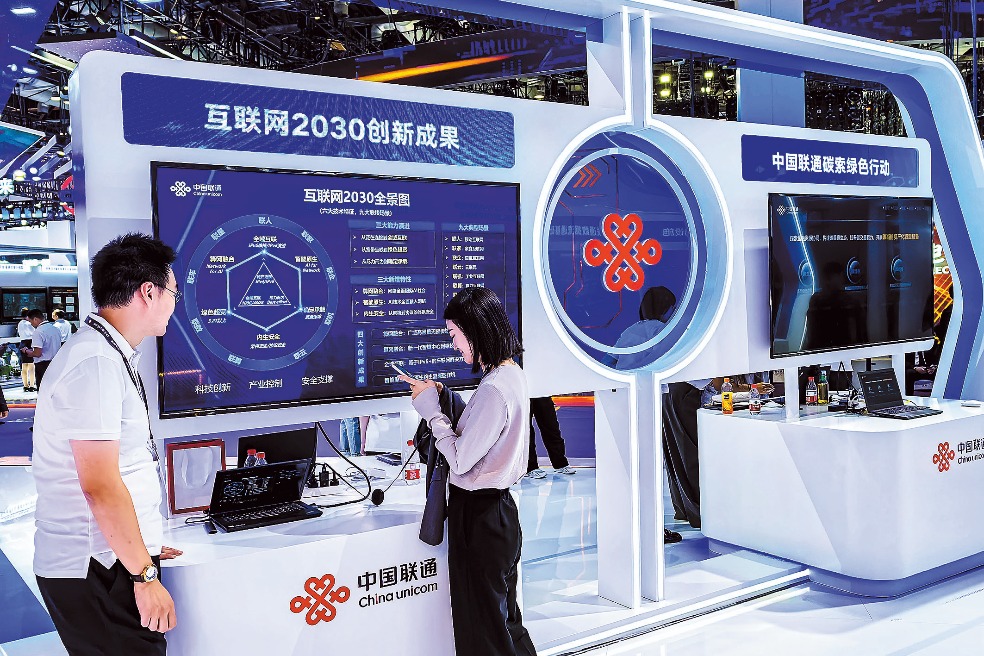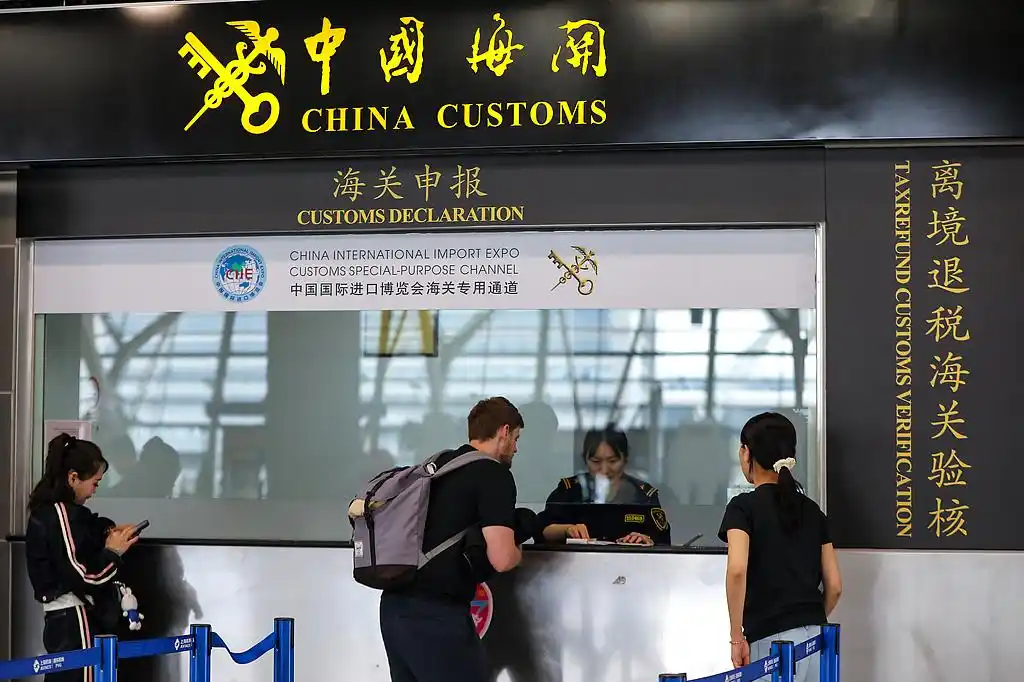
Power supply efficiency and safety boosted by inspection robot


A smart inspection robot of the Cable Tunnel Inspection Center of the State Grid Shaoxing Power Supply Company conducted partial discharge detection operations on the 220 kilovolt Landong and Landu lines in the Tujingtou Cable Tunnel in Shaoxing on May 8. Its aim is to expand unmanned operation scenarios and ensure the safety of the main power supply network by using machines instead of humans.
The Tujingtou Cable Tunnel is located in the Yuecheng district of Shaoxing city, within the Kuaiji Mountain Scenic Area. Spanning 612 meters, it was completed in November 2015. It includes six circuits of cable lines, including the 220 kV Landong and Landu lines, making it an important conduit for power supply in Shaoxing. Compared to overhead lines, cable lines have lower maintenance costs, and the reliability of the power supply is higher.
Initially, manual inspections were conducted for the cable lines inside the tunnel. However, the enclosed environment within the tunnel posed significant safety hazards for inspection personnel in case of toxic gases. Additionally, manual inspections had limitations in detecting surface corrosion or heating of the cables.
Therefore, the State Grid Shaoxing Power Supply Company promoted the unmanned inspection process of cable tunnels by introducing smart inspection robots to perform the inspections. The robot is a quadruped robot equipped with functions such as autonomous obstacle avoidance, emergency braking, autonomous charging and autonomous inspection.
During inspections, the robot can calculate its current position in real-time based on the depth camera and radar it carries, combined with a 3D point cloud map. Upon receiving inspection instructions, it autonomously navigates through preset paths. The robot's head is equipped with visible light and infrared gimbals for observing and inspecting the cables and civil structures, making it capable of conducting comprehensive and detailed infrared inspections at designated points within the tunnel. It also carries high-precision partial discharge detection sensors to conduct partial monthly discharge inspections at some locations of the cables for the six cable lines in the tunnel.
Consequent to detecting any anomalies, the robot can immediately transmit the abnormal data to the control platform of the transmission centralized monitoring center, generate equipment condition reports, inspection reports and alarm reports to assist personnel in identifying and rectifying defects and hazards. In addition to the cable tunnel smart inspection robot, the Tujingtou Cable Tunnel is also equipped with intelligent monitoring systems and supporting online monitoring devices to monitor toxic gases, temperature, humidity, ventilation and drainage status in real-time. These systems work in conjunction with the cable tunnel smart inspection robot to ensure the safe and stable operation of the cable lines.
In the next phase, the State Grid said it will continue the debugging work of the robot and enable it to adapt to more cable tunnel operation and inspection scenarios. The aim is to gradually shift from an inspection model where intelligence is primary and manpower is supplementary to unmanned inspection of cable tunnels, making the inspection work safer, smarter and more efficient, in a bid to ensure the safety of the power supply in Shaoxing.




































